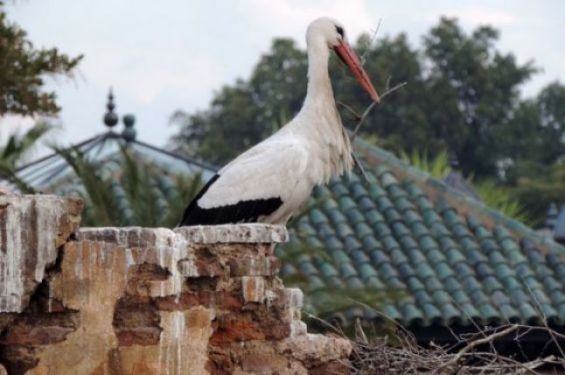A captive-bred white stork, tracked by scientists in England, has revealed a great deal of the breed’s migratory habits. Released into nature in 2019 as part of a project carried by the University of East Anglia, the juvenile bird migrated to Morocco, following the same route used by white storks that never lived in captivity.
Named Marge, the bird was tracked as it «spent the first winter near Rabat, Morocco, and returned to Morocco recently after a summer trip to Donana, in Southern Spain», researchers said.
Unlike other captive-bred white storks, which remained in Britain after their release, Marge unexpectedly left the UK shortly after its release, hailed south west and crossed the Strait of Gibraltar into Morocco.
Changing habits
«It has been fascinating to follow the individual migration routes taken since August 2019 and the data collected is allowing us to build up a picture of the wide range of behaviors and patterns displayed by our juveniles», Dr Aldina Franco, associate professor in ecology at UEA.
«Marge spent the first winter near Rabat, Morocco, and returned to Morocco recently after a summer trip to Donana, in Southern Spain. Some of the 2019 birds remained resident in Britain».
The case of Marge shows how migration habits among white storks change, the study reveals. The same thing goes for birds from the same breed in Morocco. According to Imad Cherkaoui, a Moroccan ornithologist, white storks in Morocco have also had their migratory habits «change» throughout the years.
«They no longer migrate and they became practically sedentary throughout the whole year», he explained.
«This is due to a number of factors, such as the milder climate in the Mediterranean area, which makes winters less harsh and summers more arid. There is also the proliferation of urban landfills which provide a staple food base for white storks in Morocco».
The northern populations of the species, such as Marge, continue to migrate, Cherkaoui said, to spend winter in Morocco to go further south.
In the Kingdom, however, the bird has always had a respected status among the population. They are a protected species and «sacred» ones, according to popular beliefs. «They are believed to bring happiness when nesting on top of a house’s roof», the professor concluded.





 chargement...
chargement...













